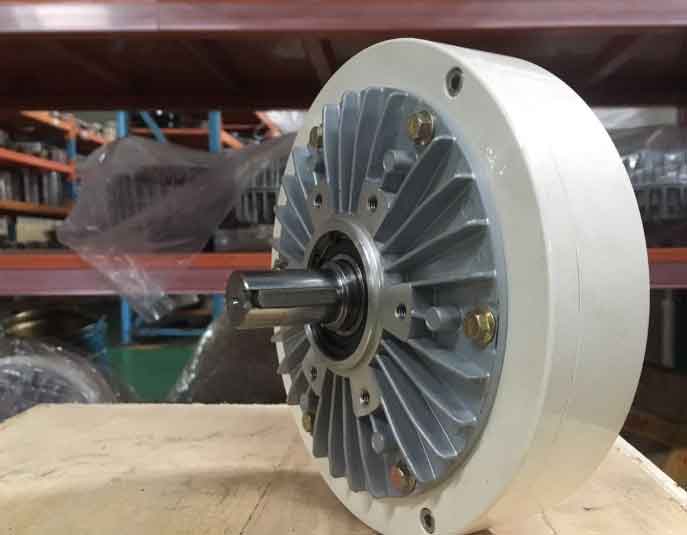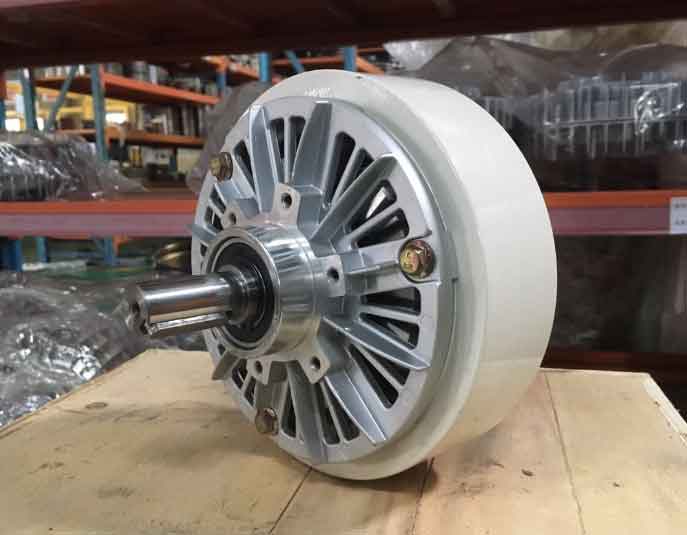Magnetic Powder Clutches (MPCs) and brakes are a subset of electromagnetic clutches, offering advantages such as simple structure, easy adjustment, wide torque control range, reliable operation, and rapid response speed. These attributes have led to their widespread use in transmission systems of various mechanical devices.
MPCs primarily consist of magnetic powder, stator, and rotor. During operation, the magnetic powder within the magnetic chamber forms a magnetic powder chain under the influence of excitation current, transmitting driving torque between the stator and rotor. Magnetic powder is the crucial component of MPC, with its performance forming the foundation for MPC design, parameter calculations, and coefficient selection.
Given the frequent sliding and rolling friction between magnetic particles during slip operation, magnetic powders must meet stringent requirements, including excellent magnetic properties, high-temperature and wear resistance, high tap density, good flowability, sufficiently high Curie temperature, and strong oxidation resistance. Commonly used magnetic powder materials include soft magnetic materials like ferrite powder, elemental powder, and alloy powder. Notably, alloy powders like Fe—CoNi, FeCrAI, and Cr13 are widely utilized due to their outstanding comprehensive performance.
In an effort to enrich the magnetic powder variety, this study introduces a novel alloy magnetic powder designated as CF—A and provides a preliminary evaluation of its dynamic and static performance.
Dynamic Performance of Magnetic Powder
Working under adverse conditions of high temperature and slip, magnetic powders in MPCs experience forces such as magnetic field, impact, and friction. While static indicators fall short of reflecting actual performance, a bench test simulating real-world conditions offers a more intuitive and practical approach.
The testing rig comprises an ~M motor, gearbox, clutch (brake), and control cabinet. The motor and gearbox provide input torque, while the control cabinet adjusts current and input speed to assess clutch parameter changes.
Output Torque Testing
A domestically-produced CZ-110 brake is employed, utilizing magnetic powder with particle size smaller than 150 μm and a loading of 100g based on brake magnetic clearance dimensions. Prior to testing, the brake undergoes a 20-minute run-in period, achieving a run-in torque of 25-30 N·m.
New Alloy Magnetic Powder Dynamic and Static Test Conclusions
- Static testing indicates that CF—A magnetic powder exhibits excellent sphericity, flowability, high tap density, and magnetic induction intensity, demonstrating good high-temperature magnetic stability.
- CF—A magnetic powder demonstrates good heat and oxidation resistance at temperatures ranging from 200-300°C, while its magnetic properties deteriorate noticeably between 500-600°C.
- Failure of CF—A is mainly attributed to iron oxide shedding, causing increased and enlarged surface pits.
- CF—A magnetic powder boasts superior heat resistance and high output torque, albeit with lower stability.
- Application testing confirms CF—A’s suitability for MPC requirements.
- CF—A magnetic powder is well-suited for scenarios requiring heat resistance, high-temperature stability, and substantial output torque.
Dynamic Performance of CF—A Magnetic Powder
| Test Conditions | Results |
|---|---|
| Magnetic Stability | Excellent under high-temperature, slip conditions |
| Heat Resistance | Good up to 200-300°C, deterioration at 500-600°C |
| Failure Analysis | Iron oxide shedding causing surface pits |
| Torque Output | High, with reduced stability |
| Application Test | Suitable for MPC requirements |
Conclusion
In summary, the development of CF—A magnetic powder introduces a promising material for enhancing MPC performance, especially in applications demanding heat resistance, high-temperature stability, and substantial output torque.
During testing, the brake input speed stabilizes between 1400-1500 rpm. Excitation current is incrementally increased from 0 to 1.8A in steps of 0.2A, then reversed to 0, with torque values recorded at different current levels.
This study introduces CF—A magnetic powder as a promising solution, particularly for applications requiring heat resistance, high-temperature stability, and substantial output torque in magnetic powder clutches.
By providing a thorough assessment of CF—A’s dynamic and static performance, this research paves the way for improved magnetic powder materials in the field of magnetic powder clutches and brakes.

